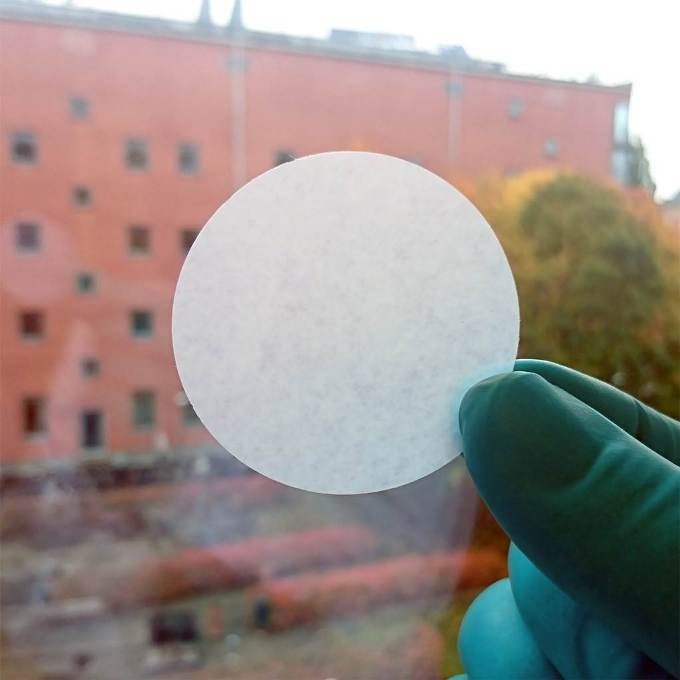Aug 19 2019
One of Bangladesh’s persistent challenges is the issue of access to safe drinking water.
 Paper filter made from algae. (Photo credit: Albert Mihranyan)
Paper filter made from algae. (Photo credit: Albert Mihranyan)
A team of researchers from Uppsala University, Sweden, and Dhaka University, Bangladesh has demonstrated that a locally growing and formerly untouched green macroalgae species could be used to extract cellulose nanofibers, which can then be made into paper sheets with a bespoke pore size and be employed for point-of-use water treatment.
The paper filter has shown excellent bacteria and virus removal capacity in the lab as well as in real-life tests. The researchers believe that with additional development, the paper filter made from Pithophora algae (or “Shewla”), could be an inexpensive and efficient solution to prevent many potentially lethal water-borne infections.
Pithophora algae have been largely overlooked in the past as a valuable raw material. It is with great satisfaction that we can now document excellent pathogen removal clearance for both water-borne bacteria and viruses with efficiency above 99.999 percent. It can purify even the smallest virus particles of 27-28 nanometers.
Albert Mihranyan, Study Lead and Professor of Nanotechnology, Uppsala University
The population of Bangladesh is over 168 million, which is bigger than that of Russia (144.5 million). By 2050, the estimated growth rates indicate that the population of Bangladesh may go up to 200–225 million people. In certain regions of Bangladesh, such as the cities of Chittagong or Dhaka, the density of population is as high as 205,000 inhabitants/km2, which is approximately 58 times more than that in Stockholm and almost 20 times more than that in New York City.
In 2018, around 15 million people were found to be below the extreme poverty line of USD 1.90 (18 SEK) per day. Hyper-high density of population, lack of clean water, and poor hygiene increase the danger of spreading water-borne infections.
The cities of Chittagong and Dhaka are the only cities with widespread piped water and sewage system, but even in those places, the water is provided at the most for a few hours daily and may still be polluted with communicable pathogens because of leakage in pipelines. With the population of Dhaka increasing over 300,000 persons/year, access to clean water is very important for sustainable life.
To stop the spread of water-borne diseases, inexpensive point-of-use water treatment approaches that can be effective against all types of water-borne pathogens are necessary. Sunlight pasteurization, boiling, and chemical disinfection are few of the approaches that are presently used for point-of-use water treatment.
A superior way of treating water to physically eliminate all kinds of pathogens is filtration. Therefore, new kinds of inexpensive point-of-use filters that can eliminate all types of pathogenic bacteria, viruses, and spores are highly sought after.
Because of the collaborative efforts by the Bangladeshi and Swedish teams, a new source of locally growing raw material has been identified that can be used for producing paper filter for water treatment applications.
Access to clean water will contribute strongly to improved health thus reducing poverty. We are optimistic that through future development of devices the filter paper produced from the locally growing algae will be useful to prevent potentially deadly water-borne diseases and improve the quality of life for millions of people.
Khondkar Siddique-e-Rabbani, Project Coordinator and Honorary Professor, University of Dhaka
The entire project is sponsored by the Swedish Research Council (Vetenskapsrådet Utvecklingsforskning No. 2016-05715) and the Knut and Alice Wallenberg Foundation (Wallenberg Academy Fellow grant KAW 2013.0190).